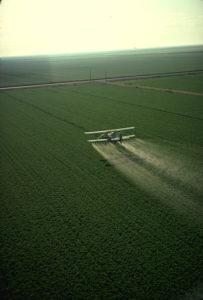There is a remarkable story unfolding in Ontario and Quebec around pesticides and bees, rooted in two competing doomsday scenarios. Grain farmers claim pests will destroy their crops unless they are allowed to use neonicitinoid pesticides, while beekeepers point to an epidemic of honeybee colony mortality that reached 58% last year, which they blame on the bee-toxic neonics.
Honeybees have been declining globally for well over a decade due to a perfect storm of harmful factors, including agricultural pesticides, massive single-cropped fields cleared by weed killers of the diverse nectar and pollen sources critical for bee nutrition, and a dramatic increase in diseases and pests.
Many beekeepers and environmental groups blame the neonicitinoids, so named because of their chemical similarity to nicotine, as the primary cause of diminished pollinator populations. Not surprisingly, pesticide companies claim little or no impact. Most experts agree that the neonicitinoids can be problematic but are just one of many pesticides contributing to long-term pollinator declines, alongside the non-pesticide issues.
In Ontario and Quebec the impact of neonics applied to grains was more direct. The pesticide when applied to seeds in a talcum-like dust disperses aerially on crops and into nearby habitats during planting. Significant numbers of nearby honeybee colonies have died, and likely wild bees as well.
What is remarkable about the neonic controversy is not the conflict between farmers and beekeepers over pesticide use; that’s been going on for over a century. What’s unusual is that provincial governments have sided with the beekeepers, whose lobbying capacity is subdued compared to groups like the 28,000 member Grain Farmers of Ontario.
Both Ontario and Quebec have implemented restrictions on neonicitinoids unusual in North American pesticide regulation, targeting an 80 per cent reduction in neonic use. Farmers can now only use neonicitinoid-treated seeds when they have a serious and independently verified pest problem that can not be managed by any other means, and then only with the approval of a registered pest management advisor, essentially mandating the desirable but largely unenforced principles of sustainable pest management.
As fascinating as this story is on its own, it’s just a microcosm of the much larger issue of how pesticides and farming are regulated. The mantra of contemporary super-sized agriculture has been that high chemical inputs and vast single-crop acreages are required if we are to feed the world. This assumption is based primarily on self-assured comments by lobbyists representing the corporate agricultural interests that benefit from weak pesticide regulations and strong government subsidies encouraging industrial farming.
Until recently data to confirm or deny these claims has been sparse, although the feed-the-world refrain has become a pervasive mantra driving policy in North America. But recent studies have provided science-based rather than lobbyist-spun information, and the results are clear: organic and sustainable “organic-lite” agriculture are close to or as productive as conventional farming, with greater economic returns to the farmer and considerably less environmental impact.
The question no longer is whether organic and sustainable agriculture are viable from a yield or profit perspective. They are. The questions we should be asking revolve around what levers governments should use to shift farming practices in progressive directions.
Loose regulations around pesticides as well as vast subsidies that favor conventional farming have left us awash in annual global chemical use, about 90 million kilograms of pesticides in Canada and 2.7 billion kilograms world-wide.
Stricter pesticide regulations, such as the small but positive step taken by Ontario and Quebec to limit neonicitinoid applications, as well as modifying subsidies to favor a transition towards organic/sustainable practices, would improve farm economics and environmental integrity while maintaining high yields.
Pollinator declines are important in themselves, but more significantly are a symptom of outmoded agricultural practices. Pollinator protection could be the thin edge of the wedge driving agricultural policy towards a sweeter spot where crop yields, farming practices and environmental protection are in better balance.
Photo: By USDA Photo by: Charles O’Rear [Public domain], via Wikimedia Commons
Your thoughtful comments are most welcome:
